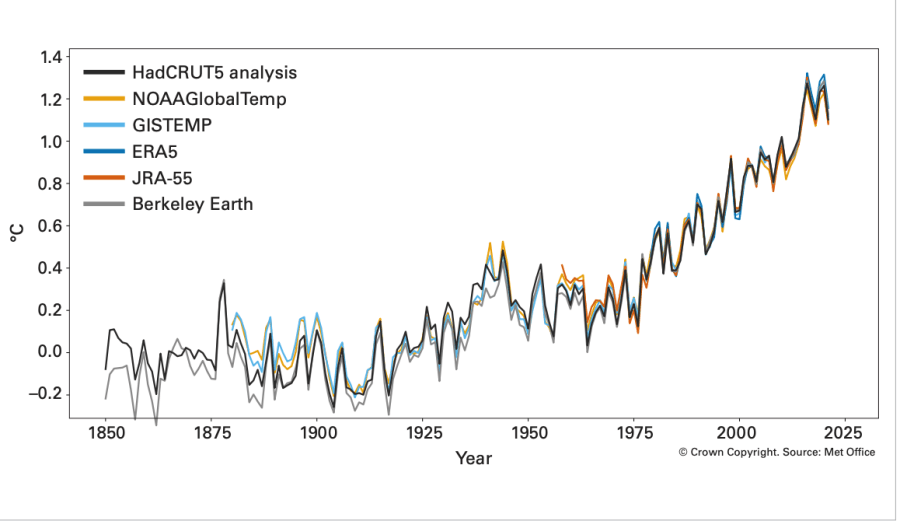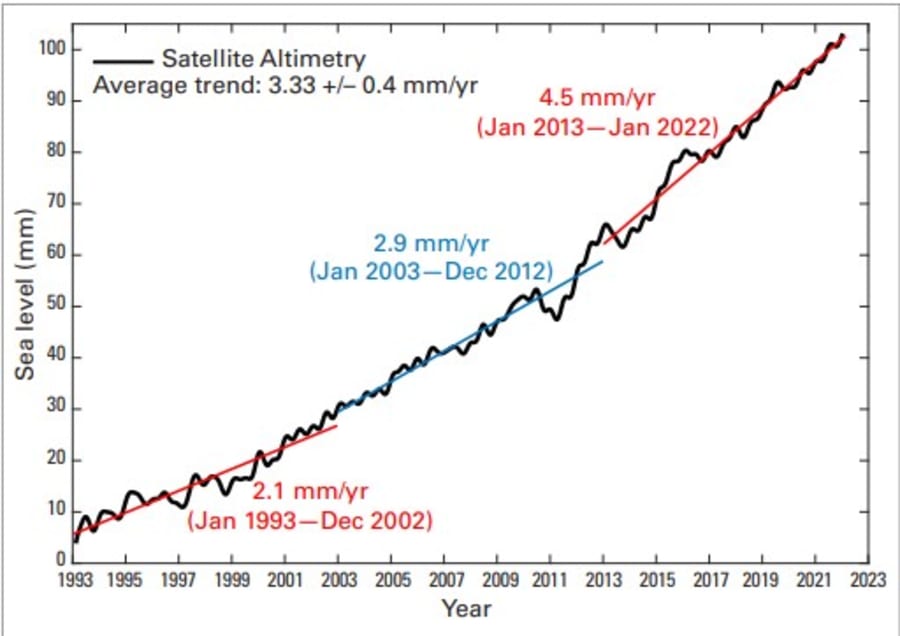The World Meteorological Organization (WMO), a specialized agency within the United Nations, has just released its State of the Global Climate 2021 report.
The WMO recognizes me as one of the world’s leaders in responsibly communicating the scientific truth about climate change without the politics and, as such, provided me with the full report ahead of time so I was able to have this story written and posted for you the moment the report was released to the world (4 a.m. EDT today).
Recommended Videos
Here are the key messages from the report that you need to know:
- Earth’s temperature continues to warm unnaturally. Even though La Nina conditions existed in the Pacific basin -- which has an overall cooling effect on the planet -- 2021 still ranked in the top seven warmest years compared to the 1850-1900 pre-industrial planetary average temperature. The past seven years have been the seven warmest years since 1850. Statistically, this is highly unusual, and not the result of natural variability. The graph below shows the temperature record dating back to 1850, as computed independently by six different climate research institutions around the world. Notice the tremendous consistency in the graph, which shows very high confidence in the accuracy of what scientists are reporting about Earth’s warming climate.
Average global temperature

- Greenhouse (heat-trapping) gas concentrations reached a new global high in 2020, when the concentration of carbon dioxide (CO2) reached 413.2 parts per million (ppm) globally, or 149% of the pre-industrial level. Data from specific locations indicate that they continued to increase in 2021 and early 2022, with monthly average CO2 at Mona Loa in Hawaii reaching 416.45 ppm in April 2020, 419.05 ppm in April 2021, and 420.23 ppm in April 2022. Some people find this hard to believe, but humans have changed the composition of our planet’s atmosphere.
- Ocean heat was a record high. The upper 1.24 miles depth of the ocean continued to warm in 2021 and it is expected that it will continue to warm in the future -- a change which is irreversible for potentially more than 1,000 years. All data sets agree that ocean warming rates show a particularly strong increase in the past two decades, with that warmth penetrating to ever deeper levels. Much of the ocean experienced at least one strong marine heatwave at some point in 2021.
- Ocean acidification is worsening. The ocean absorbs around 23% of the annual emissions of human-produced CO2 to the atmosphere. This reacts with seawater and leads to ocean acidification, which threatens organisms and ecosystem services, and hence food security, tourism and coastal protection. As the pH of the ocean decreases, its capacity to absorb CO2 from the atmosphere also declines. The IPCC concluded that “there is very high confidence that open ocean surface pH is now the lowest it has been for at least 26,000 years and current rates of pH change are unprecedented since at least that time.”
- Global mean sea level reached a new record high in 2021, after increasing at an average of nearly two-tenths of an inch per year over the period 2013 -2021. That may not sound like much but, when you consider that this is for the earth’s entire ocean surface, it’s a very significant increase and is more than double the rate of between 1993 and 2002 and is mainly due to the accelerated loss of ice mass from the ice sheets. This has major implications for hundreds of millions of coastal dwellers and increases vulnerability to tropical cyclones.
Average global sea level

- Although glaciers on average saw less melting than in recent years, there is a clear trend toward an acceleration of mass loss on multi-decadal timescales. On average, the world’s reference glaciers have thinned by 110 feet (ice-equivalent) since 1950, with 76% of this thinning since 1980. 2021 was a particularly punishing year for glaciers in Canada and the US Northwest with record ice mass loss as a result of heatwaves and fires in June and July. Greenland experienced an exceptional mid-August melt event and the first-ever recorded rainfall at Summit Station, the highest point on the ice sheet at an altitude of 10,551 feet.
- Exceptional heatwaves broke records across western North America and the Mediterranean. Death Valley, California reached 129.9 degrees on July 9, equaling a similar 2020 value as the highest recorded in the world since at least the 1930s, and Syracuse in Sicily reached 119.8 degrees. The Canadian province of British Columbia reached 121.3 degrees on June 29th, and this contributed to more than 500 reported heat-related deaths and fueled devastating wildfires which, in turn, worsened the impacts of flooding in November.
- Flooding induced economic losses of $17.7 billion in Henan province of China, and Western Europe experienced some of its most severe flooding on record in mid-July associated with economic losses in Germany exceeding $20 billion. There was heavy loss of life.
These are just the highlights (or, more aptly, the lowlights) of the report, which also discusses drought, food insecurity, ecosystems, etc. You can read the entire report yourself by clicking here.
And I want to emphasize that over 99% of the world’s climate scientists agree that our planet is warming unnaturally and that the proximate cause is human activity. Anybody who disagrees with this is flat-out rejecting rigorously verified scientific facts and very likely has no formal education whatsoever in atmospheric and climate science.


